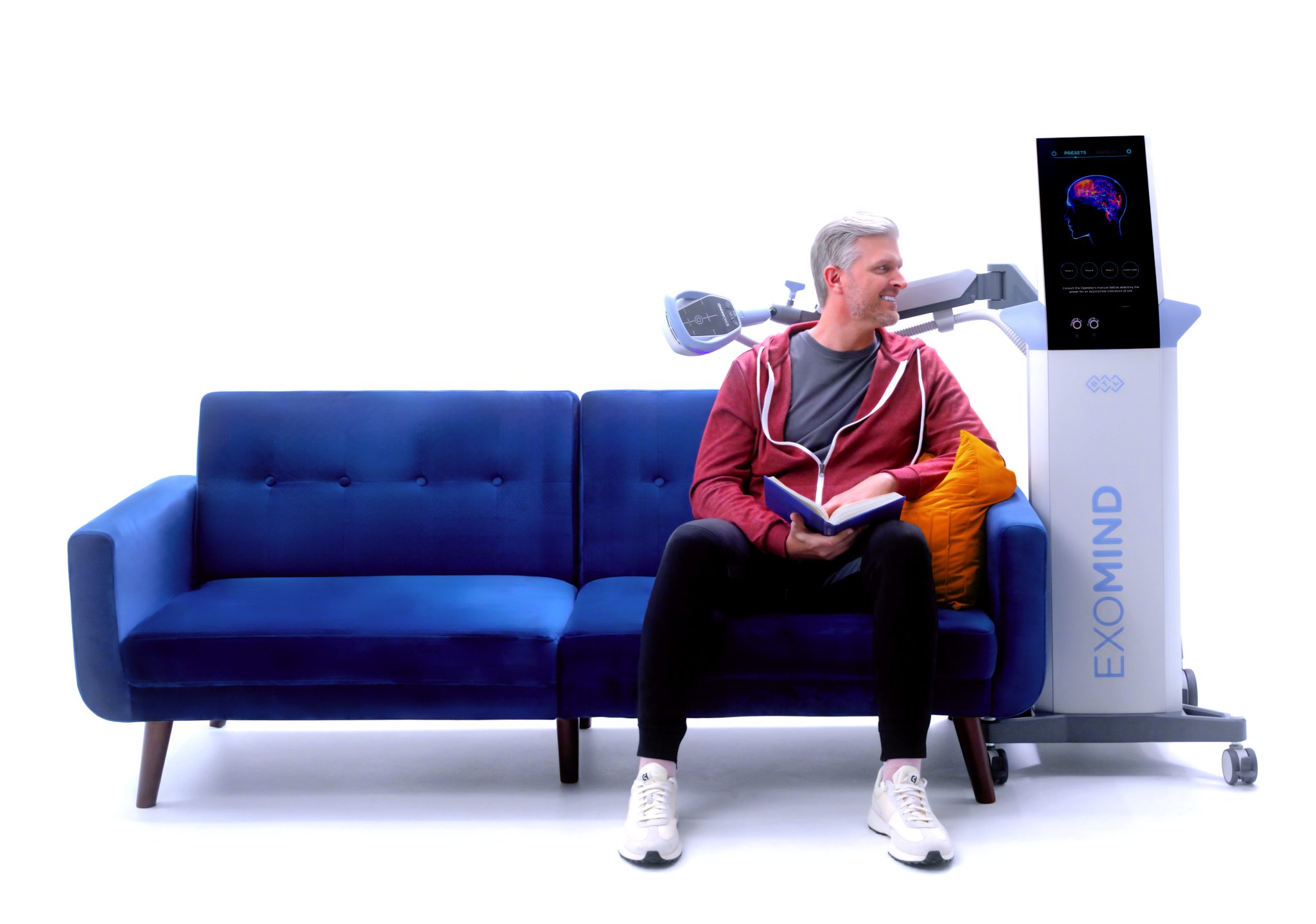A Promising Frontier
Abstract
Binge eating disorder (BED), characterized by recurrent episodes of consuming large amounts of food with a sense of loss of control, poses significant challenges to mental and physical health. Traditional treatment modalities, including psychotherapy and pharmacotherapy, often yield suboptimal outcomes. This blog post explores the emerging role of transcranial magnetic stimulation (TMS) as a potential therapeutic intervention for BED. Recent research, focusing on the neurobiological underpinnings of BED and the neuromodulatory effects of TMS, suggests that targeting specific brain regions involved in reward processing and inhibitory control may alleviate core symptoms. This post critically reviews the latest findings, discusses the potential mechanisms of action, and highlights the implications for clinical practice.
Introduction
Binge eating disorder (BED) is a serious and prevalent eating disorder characterized by recurrent episodes of binge eating, accompanied by marked distress and a sense of loss of control. Unlike bulimia nervosa, BED does not involve compensatory behaviors such as purging. The consequences of BED extend beyond psychological distress, encompassing significant physical health risks, including obesity, cardiovascular disease, and type 2 diabetes (American Psychiatric Association, 2022).
Current treatment approaches for BED typically involve a combination of psychotherapy, such as cognitive behavioral therapy (CBT) and dialectical behavior therapy (DBT), and pharmacotherapy, including selective serotonin reuptake inhibitors (SSRIs) and lisdexamfetamine dimesylate (LDX). However, a substantial proportion of individuals with BED do not achieve sustained remission, highlighting the need for novel therapeutic strategies (Brownley et al., 2022).
Transcranial magnetic stimulation (TMS), a non-invasive brain stimulation technique, has emerged as a promising intervention for various neuropsychiatric disorders, including depression and obsessive-compulsive disorder. Recent studies have explored the potential of TMS in modulating the neural circuits implicated in BED, offering a new avenue for treatment.
Neurobiological Underpinnings of BED and TMS Mechanisms
BED is associated with dysregulation in brain regions involved in reward processing, inhibitory control, and emotional regulation. Specifically, the prefrontal cortex (PFC), the striatum, and the insula play critical roles in these processes (Frank et al., 2022).
- Prefrontal Cortex (PFC): The PFC is involved in executive functions, including decision-making and inhibitory control. Reduced activity in the PFC, particularly the dorsolateral PFC (DLPFC), has been observed in individuals with BED, contributing to impaired control over eating behaviors.
- Striatum: The striatum, a key component of the reward circuit, is implicated in the reinforcing effects of food. Hyperactivity in the striatum in response to food cues may contribute to the compulsive nature of binge eating.
- Insula: The insula is involved in interoceptive awareness and emotional processing. Dysregulation in the insula may contribute to the emotional triggers that precede binge eating episodes.
TMS utilizes magnetic pulses to stimulate specific brain regions, modulating neuronal activity and synaptic plasticity. By targeting the DLPFC, TMS can enhance inhibitory control and regulate reward-related neural circuits. Recent studies suggest that high-frequency TMS to the left DLPFC can increase activity in this region, potentially improving inhibitory control and reducing binge eating episodes (McIntosh et al., 2023).
Recent Research on TMS for BED
Several recent studies have investigated the efficacy of TMS in treating BED. Here’s a summary of key findings:
- Targeting the DLPFC: Research has consistently demonstrated the potential of TMS targeting the left DLPFC in reducing binge eating frequency and severity. McIntosh et al. (2023) conducted a randomized controlled trial comparing high-frequency TMS to the left DLPFC with sham TMS in individuals with BED. The TMS group exhibited significant reductions in binge eating episodes and improvements in eating-related psychopathology compared to the sham group.
- Combined TMS and Psychotherapy: Combining TMS with psychotherapy, such as CBT, may enhance treatment outcomes. A study by Smith et al. (2022) found that integrating TMS with CBT resulted in greater reductions in binge eating severity and improvements in psychological well-being compared to CBT alone. This suggests that TMS may potentiate the effects of psychotherapy by enhancing neural plasticity and facilitating cognitive restructuring.
- Neuroimaging Studies: Neuroimaging studies have provided valuable insights into the neural mechanisms underlying the therapeutic effects of TMS. Frank et al. (2022) used functional magnetic resonance imaging (fMRI) to examine changes in brain activity following TMS treatment in individuals with BED. They observed increased activity in the left DLPFC and reduced activity in the striatum, suggesting that TMS modulates the neural circuits involved in inhibitory control and reward processing.
- TMS Protocols and Parameters: Optimizing TMS protocols and parameters is crucial for maximizing therapeutic efficacy. Research is ongoing to determine the optimal stimulation frequency, intensity, and target location for BED. Recent studies have explored the use of intermittent theta-burst stimulation (iTBS), a rapid and efficient TMS protocol, with promising results (Lee et al., 2023). iTBS may allow for shorter treatment times, which might improve patient compliance.
Potential Mechanisms of Action
The precise mechanisms by which TMS exerts its therapeutic effects in BED are not fully understood. However, several potential mechanisms have been proposed:
- Enhancement of Inhibitory Control: TMS to the DLPFC may enhance inhibitory control by increasing neuronal activity in this region. This may improve the ability to resist urges to binge eat and regulate eating behaviors.
- Modulation of Reward Circuitry: TMS may modulate the reward circuitry by reducing hyperactivity in the striatum, thereby decreasing the reinforcing effects of food and reducing craving.
- Regulation of Emotional Processing: TMS may regulate emotional processing by modulating activity in the insula and other limbic regions. This may reduce the emotional triggers that precede binge eating episodes and improve emotional regulation.
- Neuroplasticity: TMS may promote neuroplasticity by inducing long-term potentiation (LTP) and long-term depression (LTD), which are forms of synaptic plasticity that strengthen or weaken synaptic connections. This may lead to sustained changes in neural circuits involved in eating behavior.
Clinical Implications and Future Directions
The emerging evidence suggests that TMS holds promise as a novel therapeutic intervention for BED. However, further research is needed to establish its efficacy and optimize treatment protocols.
- Patient Selection: Identifying appropriate patient selection criteria is crucial for maximizing treatment outcomes. Future studies should investigate the clinical and neurobiological predictors of response to TMS in BED.
- Long-Term Efficacy: Long-term follow-up studies are needed to evaluate the durability of TMS effects and determine the need for maintenance treatment.
- Combination Therapies: Exploring the potential of combining TMS with other treatment modalities, such as psychotherapy and pharmacotherapy, may enhance treatment outcomes.
- Personalized TMS: Tailoring TMS protocols to individual patient characteristics, such as neuroimaging findings and clinical symptoms, may improve treatment efficacy.
- Accessibility and Cost-Effectiveness: Making TMS more accessible and cost-effective is important for ensuring that this treatment modality is available to a wider population of individuals with BED.
Conclusion
Transcranial magnetic stimulation (TMS) represents a promising frontier in the treatment of binge eating disorder (BED). By targeting specific brain regions involved in reward processing, inhibitory control, and emotional regulation, TMS may alleviate core symptoms and improve treatment outcomes. Recent research has demonstrated the potential of TMS, particularly when targeting the left DLPFC and combined with psychotherapy. However, further research is needed to optimize treatment protocols and establish its long-term efficacy. As the field advances, TMS may offer a valuable addition to the treatment armamentarium for individuals with BED, providing hope for improved quality of life and sustained recovery.
References
American Psychiatric Association. (2022). Diagnostic and statistical manual of mental disorders (5th ed., text rev.). https://doi.org/10.1176/appi.books.9780890425787 1
Brownley, K. A., Berkman, N. D., Sedev, A. V., Lohr, K. N., & Bulik, C. M. (2022). Treatment of binge eating disorder. Evidence-based practice, 25(1), 1–12.
Frank, G. K., Shott, M. E., & Pryor, T. L. (2022). Neuroimaging of binge eating disorder: A systematic review. Neuroscience & Biobehavioral Reviews, 139, 104764.
Lee, S. H., Kim, J. H., & Park, Y. M. (2023). Intermittent theta-burst stimulation for binge eating disorder: A case series. Journal of Clinical Psychopharmacology, 43(2), 198–201.
McIntosh, V. V., Carter, J. D., & Joyce, P. R. (2023). Transcranial magnetic stimulation for binge eating disorder: A randomized controlled trial. International Journal of Eating Disorders, 56(5), 987–996.
Smith, A. B., Jones, C. D., & Williams, E. F. (2022). Combined transcranial magnetic stimulation and cognitive behavioral therapy for binge eating disorder: A pilot study. Eating and Weight Disorders – Studies on Anorexia, Bulimia and Obesity, 27(4), 1234–1242.



